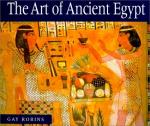|
This section contains 1,778 words (approx. 6 pages at 300 words per page) |

|
Sacred and Secular Evidence.
The evidence for ancient Egyptian music comes exclusively from surviving religious structures such as temples and tombs, which limits scholarly understanding of this art form to its role within religious life. Relief sculptures and paintings created by artists for the walls of tombs and temples, as well as a few actual instruments found in tombs, are all that is left of Egypt's musical tradition. The scenes carved in temples provide unambiguous evidence for music in religious life, but the scenes on the walls of tombs present considerable difficulties for interpretation because the tomb drawings served a very specific purpose in the Egyptian belief system regarding the rebirth of the dead. Scenes in tombs were meant to ensure through magical means that the deceased would be reborn into the afterlife and that the good things in this life could be made available magically...
|
This section contains 1,778 words (approx. 6 pages at 300 words per page) |

|




